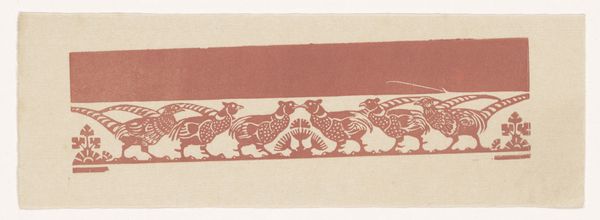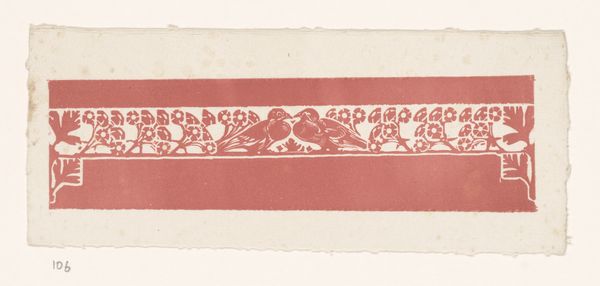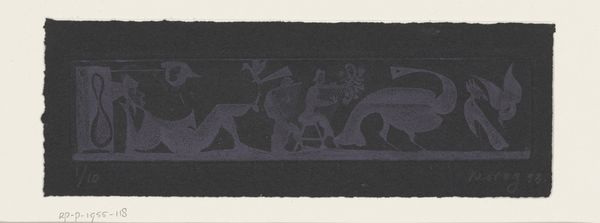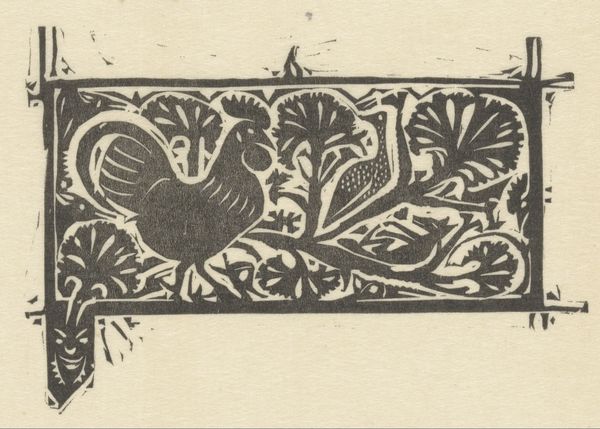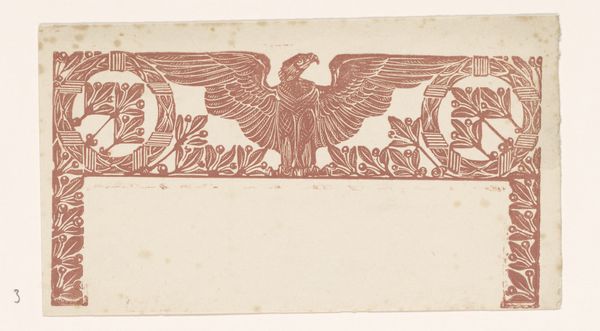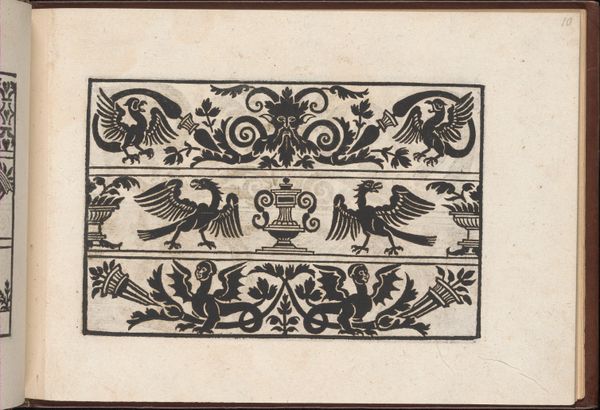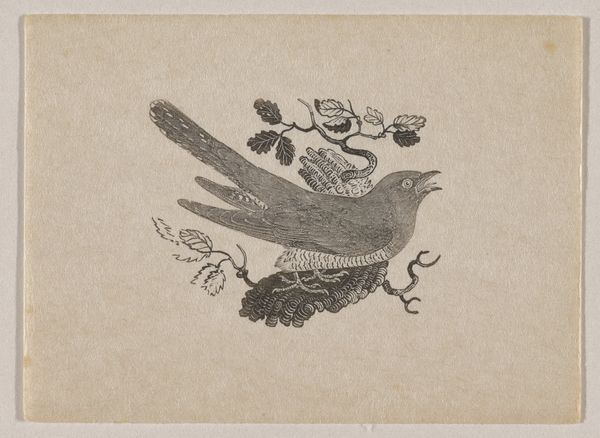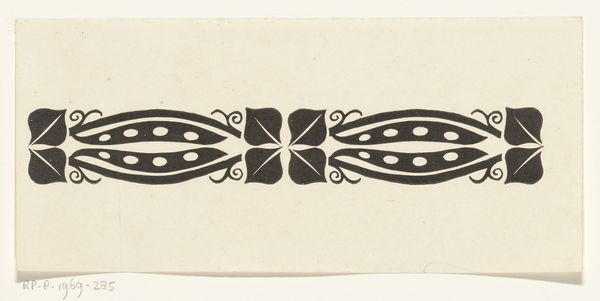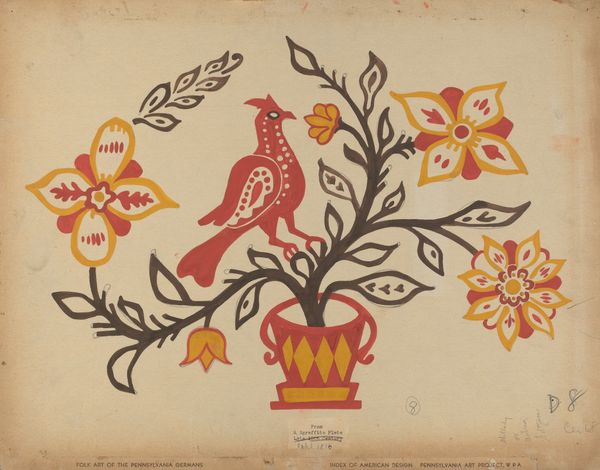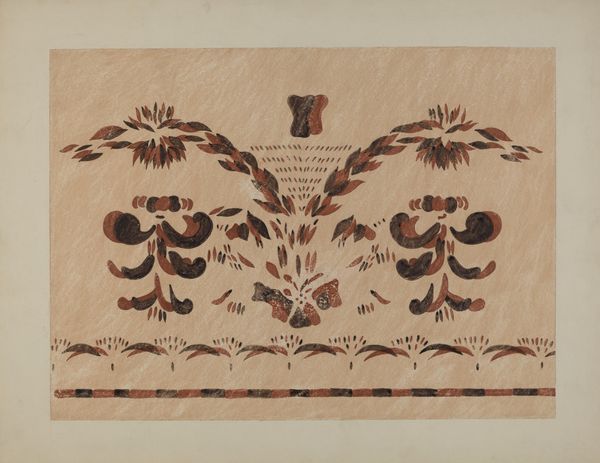
#
shading and hatching
#
toned paper
#
childish illustration
#
old engraving style
#
woodcut effect
#
personal sketchbook
#
linocut print
#
ink colored
#
sketchbook drawing
#
sketchbook art
Dimensions: height 59 mm, width 167 mm
Copyright: Rijks Museum: Open Domain
Editor: Here we have "Ornamentele rand met bladeren, vogels en zon" or "Ornamental border with leaves, birds and sun" by Bernard Willem Wierink, from around 1910. It looks like it's made with ink on toned paper, and I'm struck by the way the simple, repeating forms create such a charming, almost folksy effect. What catches your eye in this piece? Curator: The relationship between positive and negative space is quite striking. Observe how the artist manipulates figure-ground relationships to define the birds, leaves, and sun. Note the careful arrangement of these motifs and how they activate the surrounding space. Consider how the choice of a single colour ink flattens the composition, emphasizing its graphic quality. Editor: That's interesting. I hadn’t thought about the negative space so much. Is the repetition important? Curator: Indeed. Repetition and symmetry are fundamental to its structure. The rhythmic recurrence of elements—birds, leaves, sun—creates a visual cadence. What happens if we change this symmetry? The linear arrangement of these elements contribute to the overall unity and balance. Can you identify instances where the artist deviates from this rigid structure? Editor: Well, now that you mention it, each grouping of the birds and leaves has a slight variation. I see that adds some dynamism. Curator: Precisely. By appreciating the strategic deployment of shape and form, we recognize the skill in modulating space within tight formal constraints. How might our experience be different with more color? Editor: I think it might lose some of its simple charm. It's fascinating to consider how the formal elements all work together. Curator: Indeed. The work invites careful attention to its composition. Through form we understand the art!
Comments
No comments
Be the first to comment and join the conversation on the ultimate creative platform.
